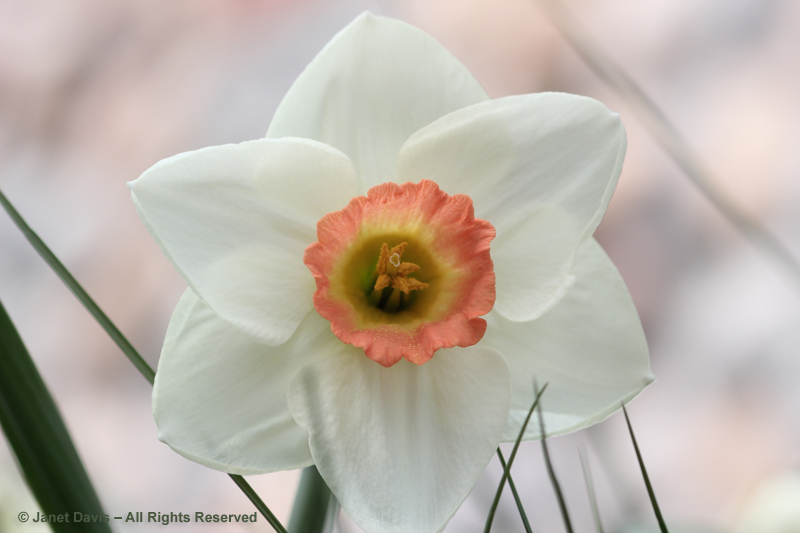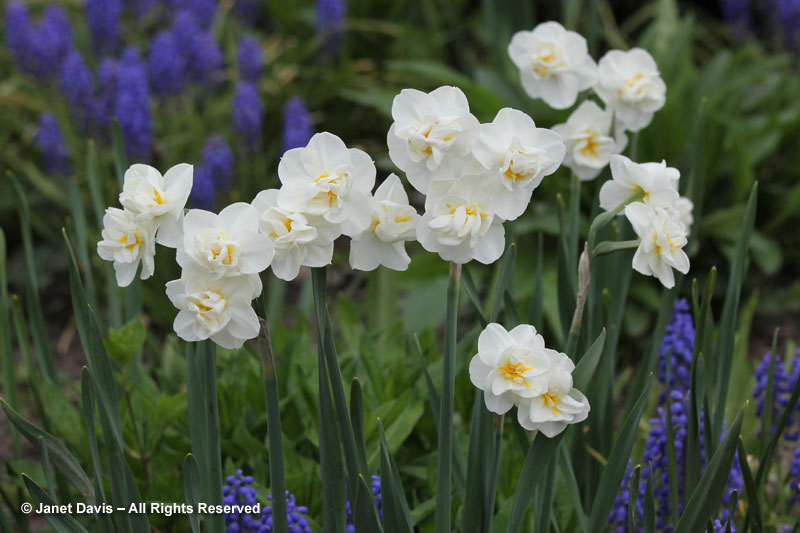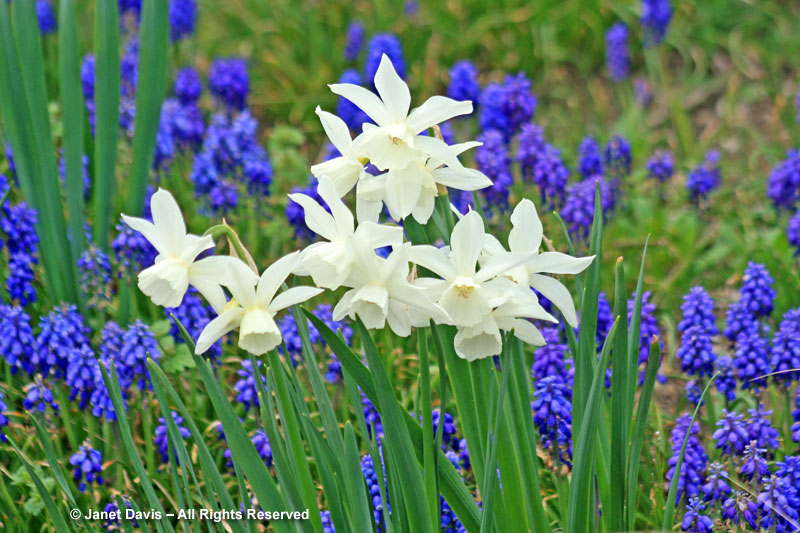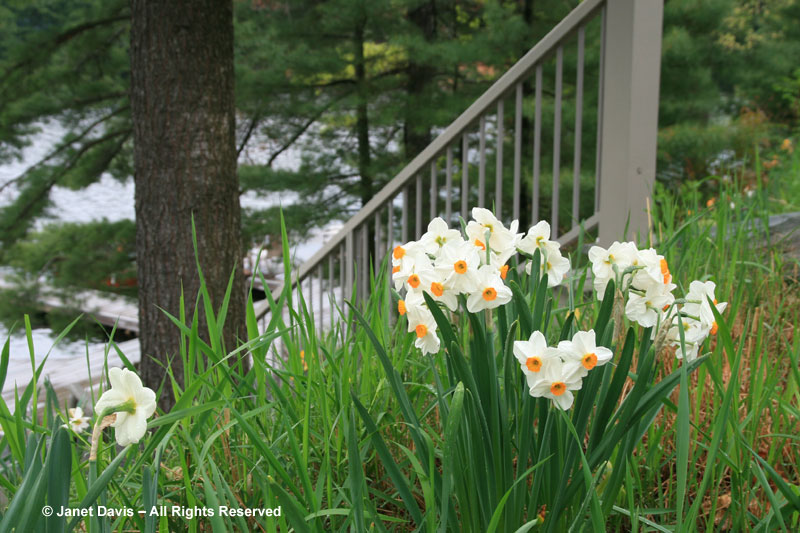I could get by in spring without tulips. I could easily survive without the crabapple tree. Lilacs? Meh. But I would be utterly bereft without daffodils. And not just any daffodils, either: no swaggering, yellow ‘Carlton’s or ‘Dutch Master’s for this daffy-don-dilly (though I’ve bought inexpensive mixes that contain all manner of yellows, and that’s okay.) I prefer them white, or mostly white. But above all, they must be perfumed.
I don’t bother growing daffodils in the city. For whatever reason (clay? alkaline soil? bad juju?), they are disinclined to do well there. I grow them on a sandy hillside a few hours north of Toronto on the shore of Lake Muskoka. They thrive there in acidic soil created by the weathering of the granite Precambrian Shield below it, and augmented yearly by the breakdown of white pine needles, red oak leaves and nothing else. I sometimes cut the stems down after the flowers have withered and the foliage has yellowed, but not always. It doesn’t seem to matter much.
Here are four of my very favourite daffodils, and why. (I grow the first three, but love ‘Thalia’ and know it well from other gardens. Note that all four are mid-late or late-season, which is just as well; snow can wreck a daffodil party.
Narcissus ‘Fragrant Rose’ – Div 2 – Large-cupped – 40 cm (16 inch) – scent of raspberries and old roses – Brian Duncan Rathsowen Daffodils, N. Ireland, 1978 – peach pink cup – mid-season to late. Take my word for it; this is a keeper, and so stunningly beautiful with its peach & yellow cup and that perfume, unlike any other daffodil. I often place it in a vase alone so the other more typical daffodil scents don’t overpower it.
Narcissus ‘Cheerfulness’ – Div 4 – Double – 35-40 cm (14-16 inches) – J.B. van der Schoot , 1923 – 3-4 flowers per stem – white with ruffled, cream/yellow segments – sweet-scented – late season. When I was a little girl in Victoria, I called the slender jonquils and elegant, double daffodils in the big park plantings “narcissus”, as my mother and grandmother did, in order to differentiate them from the common old yellow daffodils. These days, they’re all called daffodils, but ‘Cheerfulness’ is still the one I associate with Beacon Hill Park — it just wasn’t as far to bend down to sniff it then. Here it is with blue grape hyacinths at the Toronto Botanical Garden.
Narcissus ‘Thalia’ – Div 5 Triandrus – 30-40 cm (12-16 inches) – pure white – M. Van Waveren and Sons, Netherlands, 1916 – 3-4 flowers per stem – mid-season to late. This is one of the best multipliers, a great perennial, and you’ll not find a more elegant, pure-white flower. It’s absolutely lovely with blue grape hyacinths (Muscari armeniacum).
Narcissus ‘Geranium’ – Div 8 Tazetta (Poetaz) – 50-60 cm (18-24 inch) – J.B. van der Schoot, the Netherlands, pre 1930 – up to 6 flowers per stem (usually less) – shimmering white with small orange cup – spicy scent – mid-season to late – AGM. This award-winner (the Royal Horticultural Society’s 1995 AGM, i.e.Award of Garden Merit) is my all-time favourite. After seeing it at the Keukenhof Gardens outside Amsterdam a years ago, I bought a few dozen to plant at the lake. ‘Geranium’ took it from there and I have loads now. The multiple flowers make it easy to pick a quick bouquet that will fill a room with perfume.
Visit botanical gardens this spring and make a note of your favourites, too, but be sure to do the smell test! That way, when you’re ready to order your bulbs in fall, you’ll know exactly which perfume to plant where.




